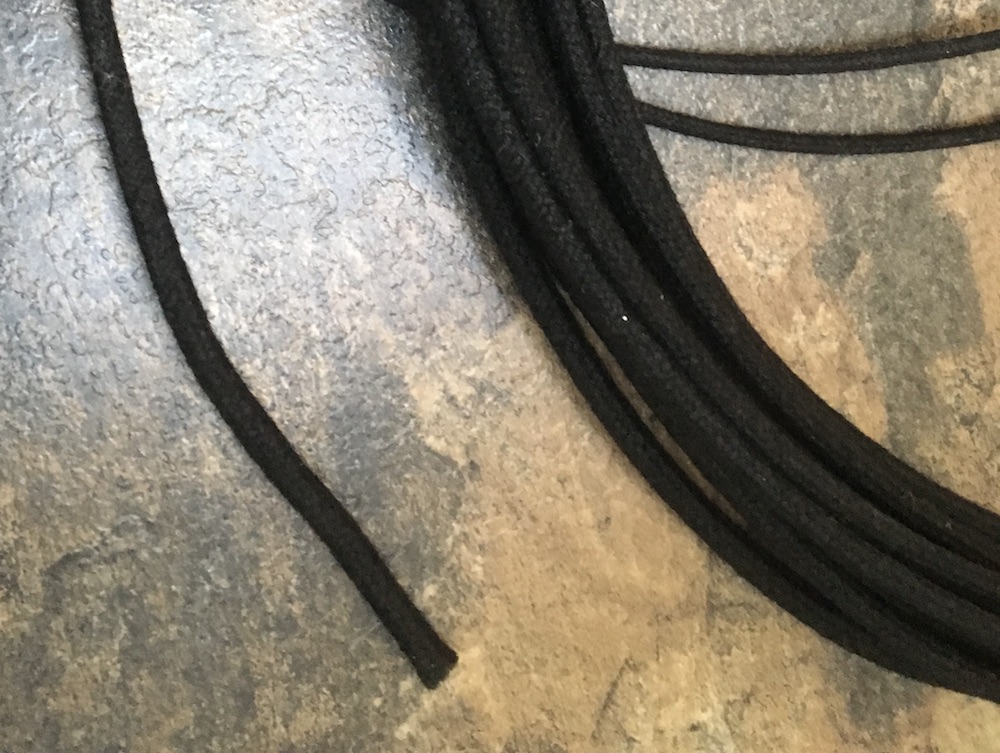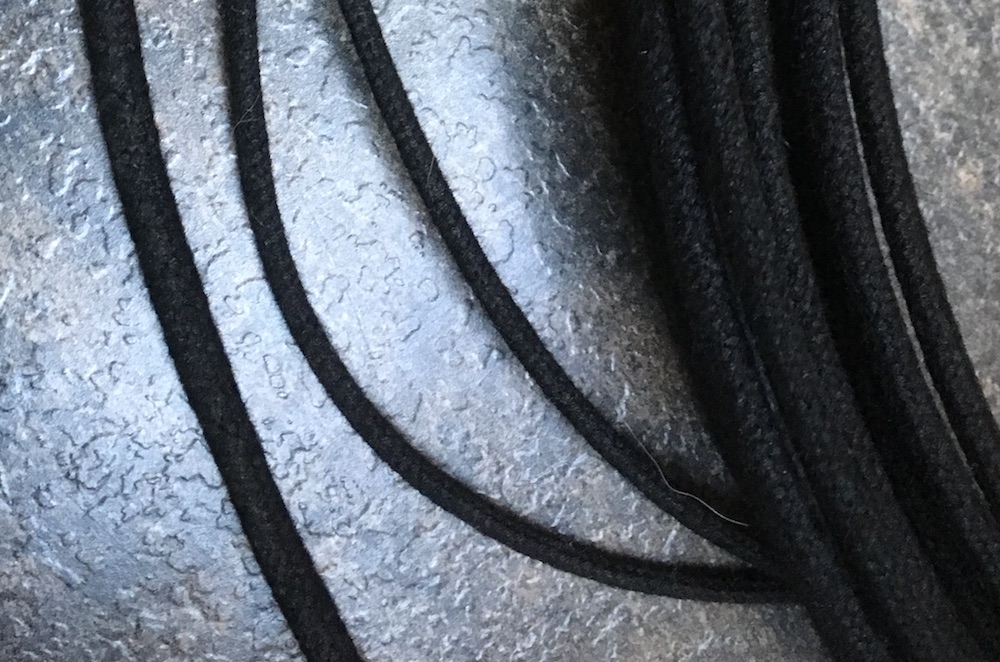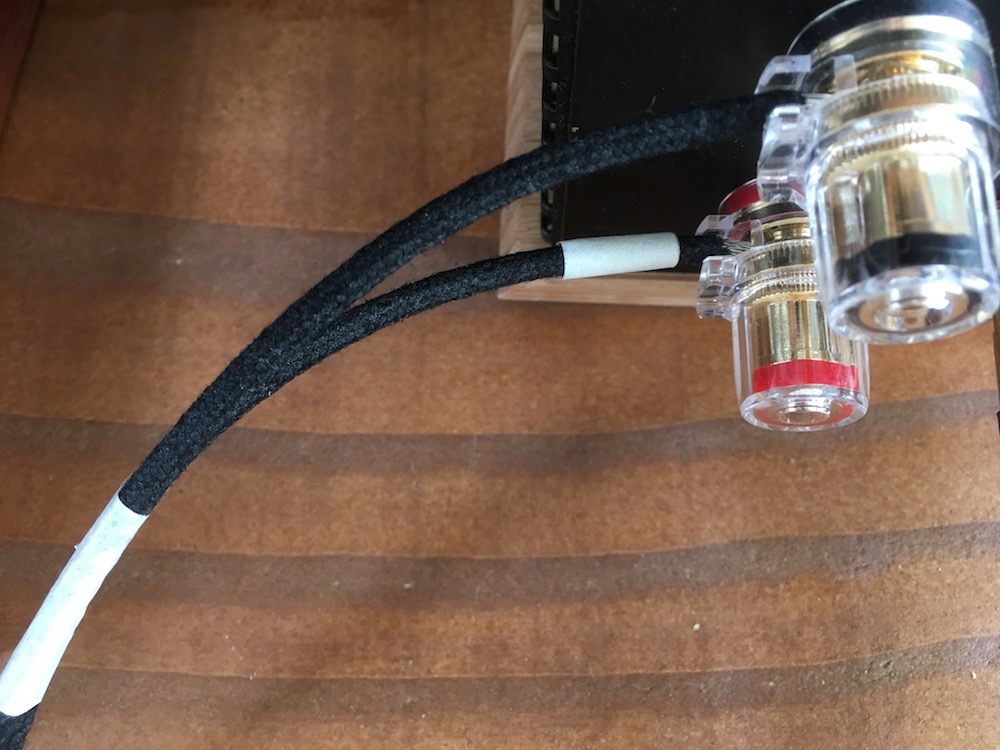Duelund DCA12GA and DCA16GA cable
Duelund audio components, more and more speaker and amplifier manufacturers use
their stuff. A label "Duelund inside" almost stands for quality assurance and for sure focus on high-end.
Duelund has a good reputation in manufacturing components with a true focus on musicality, which I like. So looking
at their new line in cabling, the stranded tinned copper variety, how does that match to the tonal focus I tend to
have? I do like the tinned copper Western Electric (WE) wire for its sound and this was introduced as a WE-alernative.
Tinned copper resembles a copper core that is covered with a thin layer of tin and in the early days this was
done to prevent the copper from aging (rusting) since the used cloth insulation was far from airtight. Adding tin to
copper makes it much heavier since specific weight of tin is relative high. Duelund uses oiled cotton as insulation
which is a bit different from WE as they used waxed cotton. Not all modernisation automatically stands for improvement,
so let's give it a go..

DCA16GA - 1.29mm diameter.
Bought the 16GA a while ago and it replaced my homecooked multistranded and solidcore speakercable. 10 Meters set me
back about 100€ and makes for 2.5 meter single strand stereo speakercable. To be sure that
interaction between plus and minus is throughout the length about the same, I tied them together using some
papertape (no plastics please). Big difference compared to my homecooked cable is the weight: The Duelund
is relative heavy.
DCA12GA - 2.06mm diameter.
Got it last week from an on-line auction and set me back about twice the money I spend on the DCA16GA: 200€.
This one is really heavy and rigid! One 12GA conductor equals almost two 16GA conductors. Tied them together as
well and put them to work.

DCA12GA and DCA16GA next to eachother.

DCA12GA hooked up..
Listening..
As a friend of my put it quite descriptively: "If these were my first speakercables, I'd probably search on..",
which says a lot..
Musicality to me is not about cripy details but about tone. And details are not the highs nor
the lows but mainly the mids. Having too much highs and lows in your systems works very well in a home cinema
system but certainly does not reflect live music (computerised music excluded). If one attends live music, that is
without amplification, there will be lots of mids and even more mids and less highs and less lows. Also pinpointing
instruments is quite difficult, most of the times it is a cacophony of sounds coming from the stage. That
cacophony however has lots of tone, tone from each instrument and voice, and all that blends together assuring
goosebubs when performed (played) well. Also dynamics! Every sound has body and impact, even the tiniest twinkle has
energy. And that is what the Duelund DCA tinned coppers do best.. So if you are looking for the higher of fidelity these
Duelund may not be to your liking, but when it comes down to reality and tone, your goosebubs will prove that.
The difference in diameters is not expressed in quantity in lows, but going up in diameter will be rewarded
by increased attack and body on each sound. There is almost no tonal difference between the 12GA and 16GA but
I am convinced that the added weight on the 12GA mostly makes up for the difference in attack and body. The combination
of the oiled cotton and heavy stranded tinned copper conductors makes for a more vibration-free cable which is
beneficial as well..
So, highly recommended for those who like their music played with realism and tone. Less recommended for those
who favor modern "higher fidelity sound".
nb: Please allow for some burning in, one week continously playing at least!
nb2: Got inspired by Jeff..
